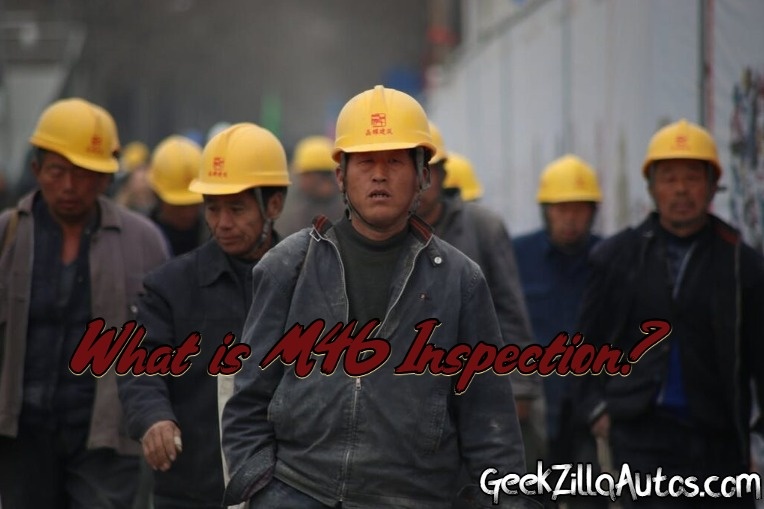Introduction
In the bustling world of industrial operations, the Lakeshore Industrial M46 inspection stands out as a vital component for ensuring safety and compliance.
These inspections help maintain equipment and structures, safeguarding assets and the workforce. So, why is this inspection so crucial? Let’s dive into the details!
What is M46 Inspection?

M46 Inspection refers to a systematic evaluation of industrial equipment, typically focusing on mechanical and electrical systems. This process is essential for identifying potential risks and ensuring that everything is functioning as intended.
Key Components Involved in M46 Inspection
The M46 inspection process generally encompasses several components, including:
- Structural Elements: Ensuring the integrity of buildings and structures.
- Electrical Systems: Checking wiring, circuits, and safety features.
- Mechanical Systems: Assessing equipment like pumps, motors, and HVAC systems.
The Role of Lakeshore Industrial in M46 Inspection

Company Background
Lakeshore Industrial is renowned for its commitment to safety and quality. With years of experience in the industry, they have positioned themselves as leaders in M46 inspections, providing comprehensive solutions tailored to client needs.
Expertise and Experience
With a team of certified inspectors and engineers, Lakeshore Industrial brings unmatched expertise to the inspection process. Their understanding of industry standards and regulations ensures clients receive top-notch service.
Importance of Regular Inspections
Safety Considerations
Regular inspections are crucial in identifying hazards before they lead to accidents. This proactive approach significantly reduces the risk of workplace injuries and fatalities.
Compliance with Regulations
In today’s regulatory landscape, staying compliant with safety standards is non-negotiable. Regular M46 inspections help organizations avoid penalties and legal issues associated with non-compliance.
Inspection Process Overview
Step-by-Step Guide to the M46 Inspection Process
- Pre-Inspection Planning: Gathering necessary documentation and understanding the scope of work.
- On-Site Evaluation: Conducting a thorough examination of all relevant systems and components.
- Documentation: Compiling findings and creating a detailed report outlining the status of inspected items.
- Follow-Up: Implementing recommended actions based on inspection results.
Tools and Equipment Used
Inspectors typically use a variety of tools, including:
- Thermal Cameras: For electrical inspections.
- Ultrasonic Detectors: To identify leaks in piping systems.
- Visual Inspection Tools: For general assessments.
Common Areas of Focus in M46 Inspection
Structural Integrity
Inspectors look for signs of wear and tear, rust, or other structural damage that could compromise safety.
Electrical Systems
Wiring, circuit integrity, and proper grounding are all evaluated to prevent electrical failures.
Mechanical Components
Equipment functionality, alignment, and lubrication are assessed to ensure optimal operation.
Safety Measures During Inspections
Personal Protective Equipment (PPE)
Inspectors must wear appropriate PPE, including helmets, gloves, and goggles, to ensure safety during the evaluation process.
Risk Assessment Strategies
Before starting the inspection, a comprehensive risk assessment helps identify potential hazards, allowing inspectors to take precautions accordingly.
Frequency of Inspections
How Often Should M46 Inspections Occur?
The frequency of inspections often depends on industry standards and the specific equipment used. Regular reviews every six months to a year are common.
Factors Influencing Inspection Schedules
Considerations like equipment age, usage frequency, and previous inspection outcomes can dictate how often inspections should occur.
What to Expect During an M46 Inspection
Initial Assessment
The inspection begins with an initial walk-through, where inspectors evaluate the site and identify potential areas of concern.
Reporting and Documentation
After the assessment, inspectors prepare a detailed report that outlines findings, recommendations, and any immediate actions required.
Post-Inspection Procedures
Addressing Identified Issues
Once an inspection is complete, it’s crucial to prioritize and address any identified issues promptly.
Follow-Up Inspections
In some cases, follow-up inspections may be necessary to ensure that corrective actions have been implemented effectively.
Technological Advances in M46 Inspection
Use of Drones and Robotics
Innovations like drones are transforming the inspection landscape, allowing for safer and more efficient evaluations of hard-to-reach areas.
Software Innovations for Better Reporting
Modern software solutions enhance reporting accuracy and speed, ensuring that stakeholders receive timely information about inspection results.
Conclusion
In summary, the Lakeshore Industrial M46 inspection process is crucial for maintaining safety and compliance in industrial settings.
Regular inspections not only help mitigate risks but also ensure that equipment and structures are functioning optimally.
By prioritizing M46 inspections, companies can protect their assets and workforce, paving the way for long-term success.















Leave a Reply